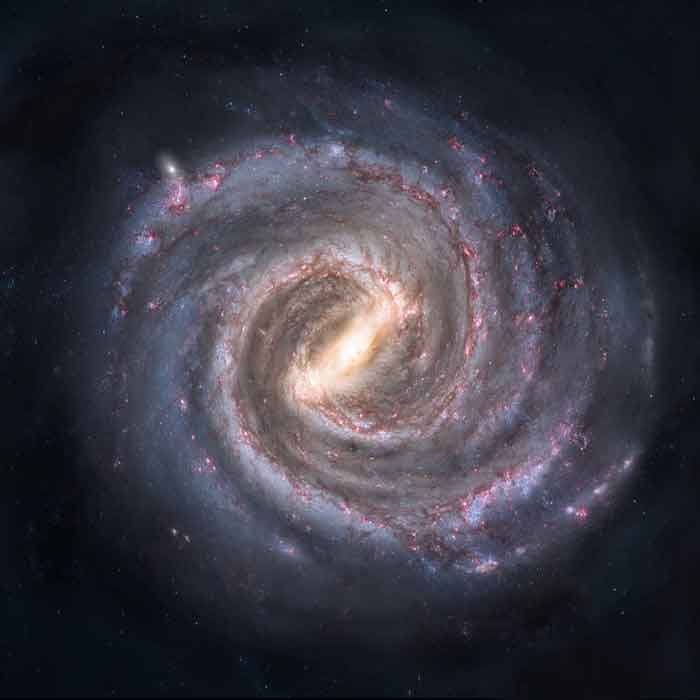 During the night time in a clear sky, you can see a lot of stars scattered all around. Most of the stars that you can see belong to our own galaxy called “Milky Way”. There are many other galaxies that are distributed throughout the universe. You can watch some galaxies clearly with the help of a hobbyist telescope, the other galaxies can be seen with large astronomical telescopes.
During the night time in a clear sky, you can see a lot of stars scattered all around. Most of the stars that you can see belong to our own galaxy called “Milky Way”. There are many other galaxies that are distributed throughout the universe. You can watch some galaxies clearly with the help of a hobbyist telescope, the other galaxies can be seen with large astronomical telescopes.
What is a Galaxy?
Galaxies are the home of stars and other cosmic objects. You can simply consider them as a cluster of stars, planets, asteroids, dust particles, black holes, and dark matter. All the members of a galaxy are held together by gravitational force – much like planets around the Sun. An average-sized galaxy has around a few hundred billion stars; large ones have trillions of stars. Many of those stars have their own solar system that houses many planets and their moons.
The gravity that holds all the stuff in a galaxy comes from a large black hole at the center of a galaxy. But, a black hole alone is not sufficient, dark matter also takes part in holding and shaping a galaxy. Scientists have estimated that there are more than 100 billion galaxies in the observable Universe.
How Galaxies Are Formed?
The formation of first Stars in the universe happened around 180 million years after the big bang. Astronomers think that early galaxies were the groups of roughly a million stars. But, how exactly the galaxies were formed is still an open question. Because there are many factors that took part in the formation of galaxies other than matter. For example, dark matter also took part in the formation and shaping of galaxies. The findings from the Hubble telescope suggest that the early galaxies started to form around 1 billion years after the big bang.
Types of Galaxies

Galaxies have various shapes and physical properties but all of them can be divided into 4 types. These are elliptical, spiral, barred spiral, and irregular galaxies.
Elliptical Galaxies – These are the galaxies that come close to the shape of an ellipse. The rate of new star formation is slower in elliptical galaxies as compared to other types. The typical size of an elliptical galaxy is larger than a spiral galaxy.
Spiral Galaxies – Spiral galaxies are circular in shape and have a center from which spiraling arms begin. The center of a spiral galaxy has mostly older stars as compared to its arms. It is estimated that spiral galaxies have more dark matter than our ordinary matter. The dark matter is considered responsible for keeping the spiral galaxies in shape.
Barred Spiral Galaxies – These galaxies have a rectangular type of bar in the center, and spiraling arms beginning from the ends of the bar. Our own galaxy, Milky Way, is also barred spiral galaxy.
Irregular Galaxies – Galaxies that don’t fit in the above discussed 3 types are placed in the list of irregular galaxies. Most of the time, irregular galaxies are formed when two galaxies collide with each other.
Facts
- Our solar system is itself bound in an orbit around the center of our galaxy – the Milky Way. It takes around 200 million years to our solar system to complete one orbit and is called galactic year.
- Our Milky Way galaxy has a diameter of around 100,000 light-years and weighs around 1.5 trillion times the mass of the Sun.
- The closest neighbor to our Milky Way galaxy is the Andromeda galaxy, which is around 2.6 million light-years away. Furthermore, the Andromeda galaxy is also on the course to collide with our Milky Way in about 4.5 billion years.





